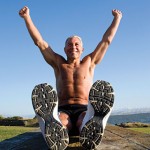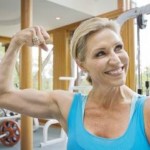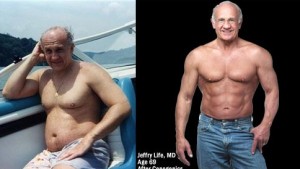Welcome back!!
This week we’re going to look at what you need to do to be fit with a flat belly at the different stages of your life. Because of the drop in metabolic rate, our ability to recover, our abuility to produce hormones and just plain strength we need to adopt a slightly different approach to bot eating and exercise depending upon our age.
Here are some general rules…
20-something
At this age you can get away with more and, for the most part, your youth will soak it all up.
I can remember being able to eat 5 big meals a day and still retaining a flt stomach. But by my late 20’s this was not the case – my abs starterd disappearing..
The lesson here is that being a 20-something doesn’t give you immunity against stomach fat. In fact
the habits that you adopt and create in your 20’s will either make your fitness & leannesss easier or hareder for the upcoming decades.
The biggest things to avoid eating are refined sugars (alcohol, sweets, biscuits, etc) and starchy, grain based carbohydrates (white bread, pasta, rice, etc)..
The way to exercise is to lift strong, run fast and do both often.And if you stay flexible, your abs will remain strong and your stomach flat, so try adding some semi-regular (at least) yoga or pilates. Learn and practise good posture and keep your overall body fat down.
30-something
You need to eat meals that are high in vegetables, lean animal protein and some fruit. If you’re a male avoid vegetable derived proteins – the phytoestrogens in these will begin to lower youtesterone levels even more than natural age progression.
If you didn’t take them in your 20s, definitely start taking fish oil supplements, Vitamin D3, a good multi and some E & C. These will go a long way towards to helping you stay lean and healthy.
For exercise keep a good mix happening : Cardio (such as sprinting, rowing, running, swimming, or even the occasional aerobics class), weight training (kettle bells, body weight, weights) and flexibility (such as yoga or pilates). Look at adding some relaxing exercises like Tai Chi or Chi Kung – these are really important in combatting stress levels and as we know increased stress means increased levels of cortisol which means more belly fat!!
40-something
Okay – now we begin to hit the downward spiral unless we either: 1) take strong corrective action NOW or 2) continue with good habits developed in our 20’s or 30’s. if you don’t do either then you will begin to lose vitality, fitness and really begin to add fat.
Your lean muscle mass starts to decrease around age 40. Avoiding grain based starchy carbohydrates (especially those with a high glycemic load) and refined sugar will help to keep your insulin levels down and, in turn, will slow down the amount of lean muscle mass you lose. You will also need up your amount of
protein, as it provides the building blocks of lean muscle mass – and these need all the help they can get.
In order to preserve your muscles masss (& you can still add more if needs be!!) lift heavy at least twice a week (complex exercises in the 4-6 rep range – thing deadlifts & squats!), start doing lots & lots of chin ups to preserve, strength and your posture; cut spriniting back to a weekly exercise and get some swimming or cycling (even if its 2 or 3 spin classes) in. Exercise in your 40’s is essential if you are to remainlean & vital into your 70’s & beyond!!
Increasing your fish-oil consumption will lower inflammation and in turn help keep your stomach as flat as possible post-40. Your abs and (especially for the ladies who ‘ve had kids) pelvic-floor muscles need to be focused on now more than ever, so pilates, yoga and lots of planks & core work is essential.
50-something and above
More of the same – move more, lift as heavy as able, do squats & chin ups & push ups, swim or bike, run and stretch, tai Chi or yoga – stay active and challengingly so. Most exercise should be resistance-based, using weights and pulleys, as this increases lean muscle mass, as well as releasing serotonin (the feel-good hormone). It will also leave you with a strong core which will protect your hips, back and knees from injury, as well as keeping your stomach flat.
Turning 50 means that you become more aware than ever of how your body takes longer to recover and how
you begin to become at least half a step slower…However it does not mean that you have to relegate yourself to dimming vitality, lowered sexuality and the scrap heap. Even without good habits formed in your 20’s, 30’s and / or 40’s you can still slow down the slide . A lot. But you have to get itno it and realise that once you get lean & fit again it will be even harder to do so if you let yourself slide again…
Your meals should be frequest with protein and lots of veges and fruits as often as possible.Eat as many colours of fruit & vegetables as you can daily – the phytonutrients & co-factors are needed like never before. Dark green leafy vegetables are important for their calcium content and you need to be eating lots of calcium-rich foods to reduce your increased risk of osteoporosis.
So the lessons don’t change – avoid sugars & trans fats, cut back or eliminate grains, avoid starchy carbs, lift heavy weigths, move more and do it regularly throughout life.
One more piece of inspiration – this is a 69 year tested & avowed natural (ie no steroids) Doctor who left it until his 50’s to get into shape. Great genetics for sure – but I’d like to look as close to looking that good as my genetics allow at that age.
See you next week. Be well.





